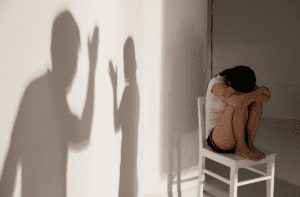
Strategies to maintain safety before you leave
This post focuses on strategies to maintain safety before you or a loved one leave an abusive relationship. If you or a loved one have experienced domestic violence but have left the relationship, please read this post for more relevant safety strategies.
Why don’t they just leave?
Deciding to leave a domestic and family violence relationship is often an extremely difficult and personal decision to make, and it will often take several attempts to leave before the separation is permanent.
Many survivors of abuse feel a range of emotions when leaving which can include relief but also grief and loss about the relationship ending. An abusive relationship can impact on a survivor’s emotional wellbeing, including a loss of self-confidence and feeling like they are at fault for the abuse.
Never the fault of the survivor
Domestic and family violence is never acceptable nor ever the fault of the survivor. It is the choice of the person using violence to engage in behaviours designed to intimidate and control their partner and children. This can include the use of physical, emotional, financial, sexual and verbally abusive behaviours designed to create an environment of power, fear and coercion.
It is the responsibility of the person using violence to become aware of their patterns of abuse and take ownership and accountability for how their actions have impacted the safety and wellbeing of their partner and children.
Strategies to keep you safe when planning to leave a domestic violence relationship

There are many things that a survivor can do if they are planning on leaving an abusive relationship that will help to maintain their safety and wellbeing during the separation process. This includes the creation of a safety plan. A specialist domestic and family violence service can help survivors create this plan and also provide information, support and referrals if needed.
What is a safety plan?
A safety plan is a personalised set of actions that the survivor and their children can take to keep themselves safe from the person using violence.
A safety plan can be reviewed and updated as the situation changes.
The survivor may choose to share their safety plan with trusted family, friends or support services who can be there to provide additional help if needed.
Before leaving the relationship
Safety plan actions to consider while still in the relationship include:
- Identifying the best way to leave the house quickly if feeling unsafe. Or if it is not possible to exit the house, identifying the safest room in the house to go to. Often this will be a room with a lockable door.
- Keeping items such as car keys, phone (kept charged) and purse/wallet in a place that is in easy reach if needing to leave quickly.
- Identifying places to go and stay in the short-term if needing to leave the house. This might be to go to a neighbour or family/ friend’s home.
- Teaching children how to call 000 and how to state their name and address for help.
- Coming up with a code word that you can use with your children, family or friends to signal that help is needed and to call 000.
- Letting trusted neighbours know about the situation and to call 000 if they see or hear any abuse.
- Being mindful to delete any internet search history or call logs around domestic violence information, separation or support services.
Pack a bag
An additional step is to prepare a bag with important items that is easy to access. This might be kept at a friend’s house or work and include:
- A change of clothes for all family members leaving
- Any medication and scripts
- Money
- Copies of house keys or car keys
- Devices such as mobile phone or laptop
- ID documents such as birth certificates, marriage certificates, drivers licence, citizenship certificates, passport, visa and work permits.
- Medicare and Centrelink cards
- Domestic Violence Orders
- Other important documentation – rental agreements, mortgage and loan agreements, business paperwork, insurance documents, financial statements, bills and accounts information
- Photos or other sentimental items
- Children’s items – such as a favourite toy or blankie
- Any evidence of abuse – medical records, police incident reports, personal journals
About the author – Renee Craft

Renee Craft is an experienced family support practitioner having worked in the areas of family dispute resolution, child protection and domestic and family violence. Renee currently works for Save the Children Australia as Team Leader for Refuge and Technical Development, overseeing a dedicated team providing support to women and children at Gareema Refuge. Renee has worked in various leadership roles in the DFV sector, including working with people choosing to use violence and regional service-system governance and coordination.
Renee is a strong advocate for improved service collaboration to provide holistic survivor-led interventions and support to enhance the safety and wellbeing of families whilst finding pathways of accountability for the person using violence. Renee believes that central to achieving this outcome is listening to the voices of children with intentional, child-inclusive practice that recognises their unique experiences, wishes and needs.




